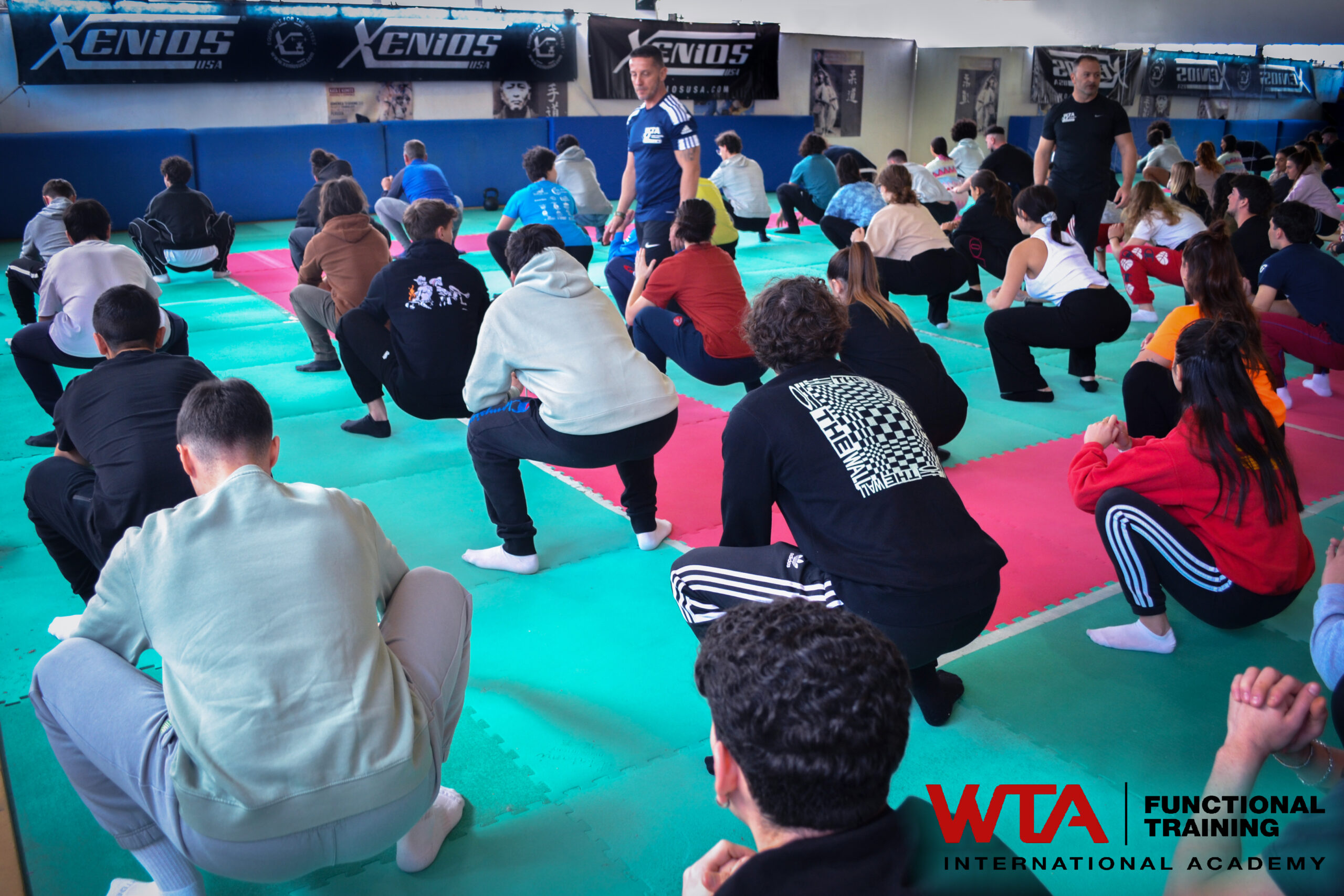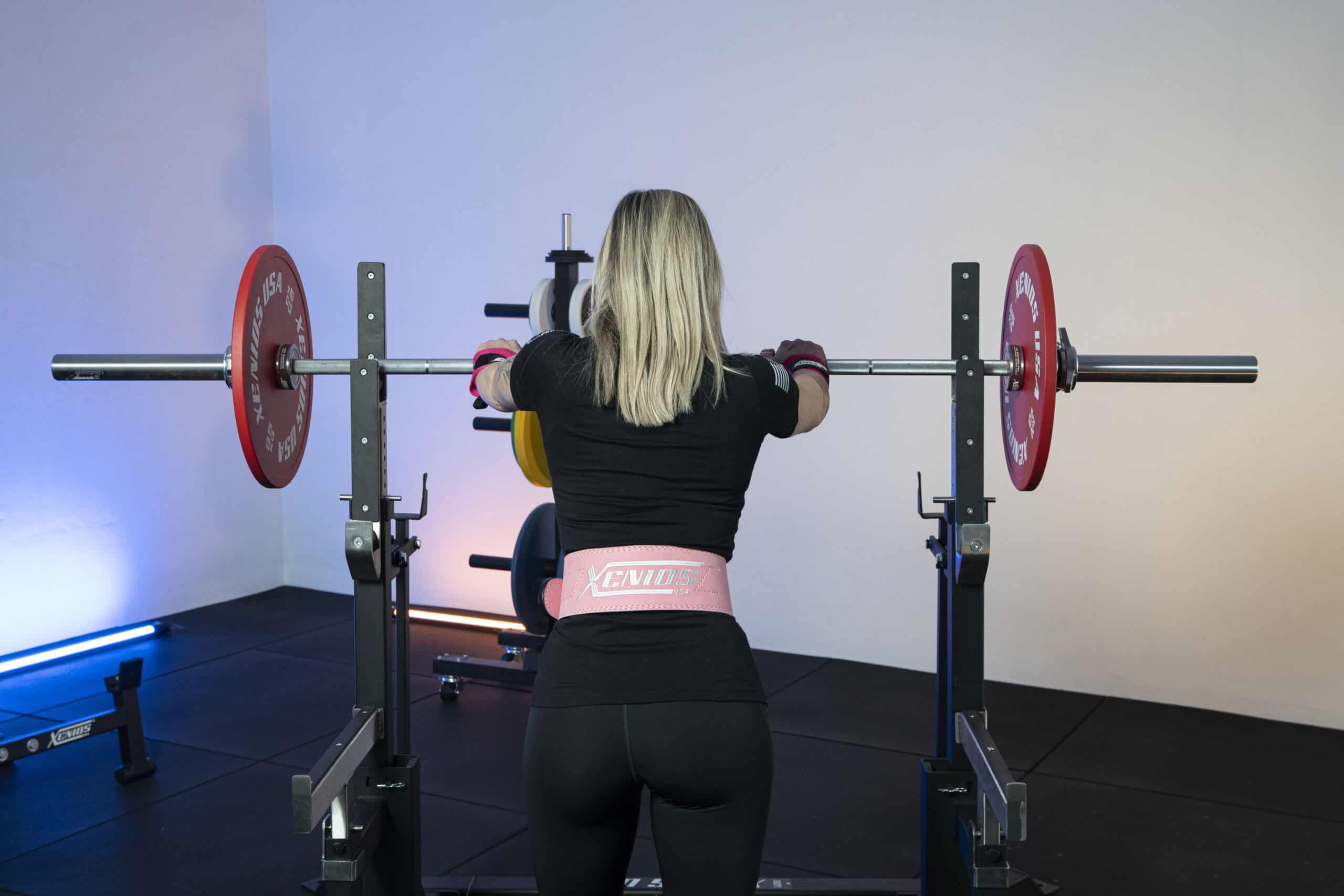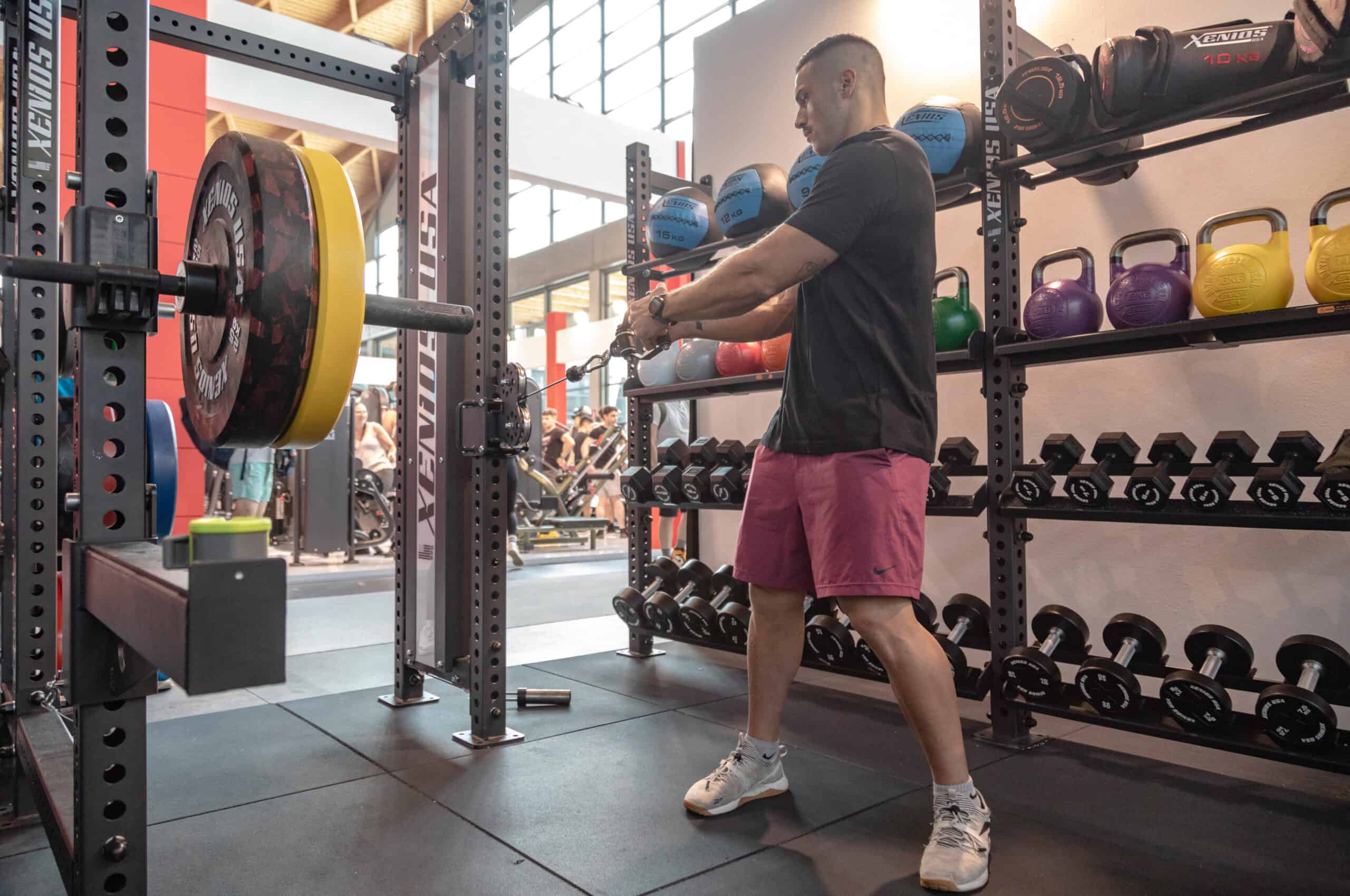How modern Sports differ from the past
How modern Sports differ from the past
The athlete’s needs in competition: high performance and low risk of injury
The athlete’s needs in competition: high performance and low risk of injury
The characteristics of kettlebells for the Athletic Training
The characteristics of kettlebells for the Athletic Training
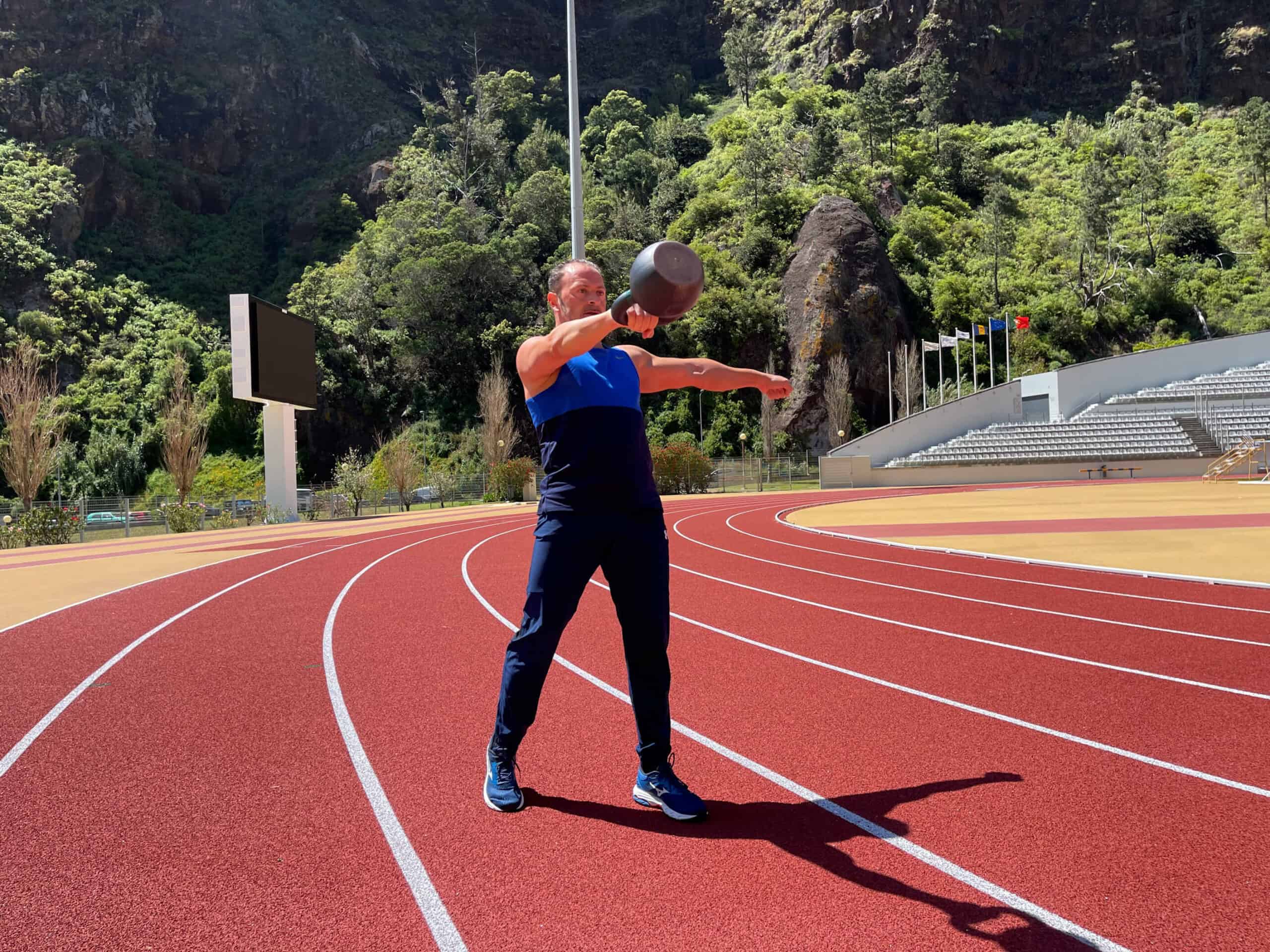
Ballistic exercises: the essence of kettlebell training
Ballistic exercises: the essence of kettlebell training
After all this technical analysis of the physical formulas of interest to us regarding exercises for maximal force, maximal speed and maximal power, the feature that must remain clear in mind is that both maximal speed and maximal power require greater acceleration than maximal force, here it is that once the appropriate load percentages (35 percent for maximum speed or 85 percent for maximum power) and working time (8/10 seconds to remain within the Anaerobic Alacactacidic Energy System) have been set, one must avail oneself of exercises that by their executive dynamics allow the expression of acceleration starting from the lower and middle base of the body, where the largest and most powerful muscles of the human body are present and which can therefore express more explosive force in the gestures. Here, ballistic exercises that take advantage of the global involvement of muscles in the kinetic chain, through the execution of broad trajectories, are able to impart great acceleration to the external load, such that both power and speed are optimally conditioned (depending on the loads and training structures used). So instead of choosing the Overhead Press (an exercise best suited for maximal strength, hypertrophy and resistant strength, depending on the loads and training techniques used), we will opt for exercises that although remaining on the same planes of motion as the Overherad Press (sagittal and frontal), make use of hip and lower limb thrust to have more speed in the overhead stretch, and thus the Push Press and Jerk for power or the Viking Push Press for speed.
And we could continue with examples on the transverse plane such as the Cross Lunge for strength and the corresponding ballistic exercise for speed and power, i.e., the Side Swing (primary fulcrum also, primary plane of motion, transverse).
Or the Bent Press for scapular girdle and trunk strength in the transverse plane and the Torsion Snatch as a ballistic exercise, and so on.
Kettlebell exercises: how to learn them effectively
Kettlebell exercises: how to learn them effectively
- The Deadlift (which teaches you to lift the load with hip extension and not with your back or arms);
- The Swing (which teaches you to slew the load in the sagittal plane through the same primary motor focus as the Deadlift, the hips, but with greater acceleration and with greater instability, thanks to the kettlebell moving away from the body’s center of gravity during concentric extension, thus learning to master it while remaining well stable at the central level of the body, the Core);
- The Single Swing (which fortifies what you learned in the Double Grip Swing and conditions it for you in the Single Grip, the same one you will have to master in the Snatch);
- The Single Clean (which teaches you how to coordinate the power of the hips with the speed of activation of the Lats, to provide the stability necessary for the scapular girdle and upper limb to accommodate the kettlebell in rack position);
- The Single Military Press (leading you to assimilate the correct overhead position, through a more controlled exercise than the Snatch);
- The Single High Pull (through which you will continue the coordination work undertaken with the Single Clean, between the hips and scapular girdle, with a trajectory that approximates the final extension of the Snatch, i.e., the arrival at speed at the overhead position).
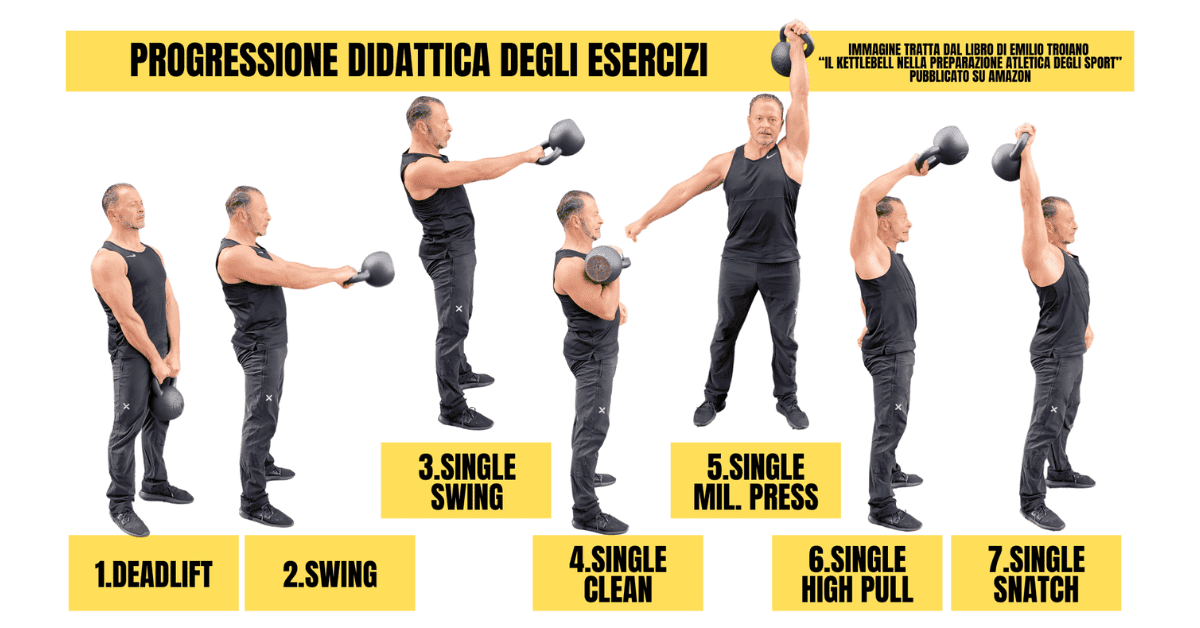
As you can see, analyzing the application potential of extraordinary tools like kettlebells in a compelling context like Athletic Training is a wonderful journey inside the physiological and biomechanical mechanisms of the human body. And we have only touched on some initial aspects of this scenario. We should go deeper into the intrinsic characteristics of kettlebells (starting with grip strength conditioning, with its related positive impact on the functionality of the 12 kinetic chains that connect the eyes to the upper and lower extremities of the body, and thus improve posture and efficiency of the entire body), their significance within the concept of Functional Training (understood as training the movement of the human body and its overall functionality, multi-directional and multi-systemic) and in relation to Athletic Sports Preparation (understood as high intensity performance enhancement and injury prevention), to understand how they should not only be introduced with continuity and precision in the training sessions of every athlete of every sport, but how they are actually indispensable to fully center an all-round athletic preparation.
- 400 kettlebell exercises categorized by level of difficulty, primary motor fulcrums, primary motion planes and related physical characteristics;
- 50 bodyweight joint mobility exercises (drawn from the Primitive Functional MovementTM system) essential basis not only for injury prevention but also for ensuring proper posture from which to then develop exercises with any external overload, including kettlebells safely and with maximum effectiveness;
- 50 Training Protocols categorized by athlete level, target conditional capacity and competitive season cycles;
- Data sheets with detailed illustrations on the execution technique of the exercises.
All with in-depth analysis of what are the characteristics and benefits of kettlebell training, the principles and applications of Functional Training and the energy (power sports, endurance sports and mixed-demand sports) and neuro-motor demands of sports (cyclic sports, acyclic sports and situational sports). In addition, for a better understanding of the exercises, the book is enhanced with all the videos of performing the 450 exercises featured (with the kettlebell and bodyweight joint mobility).


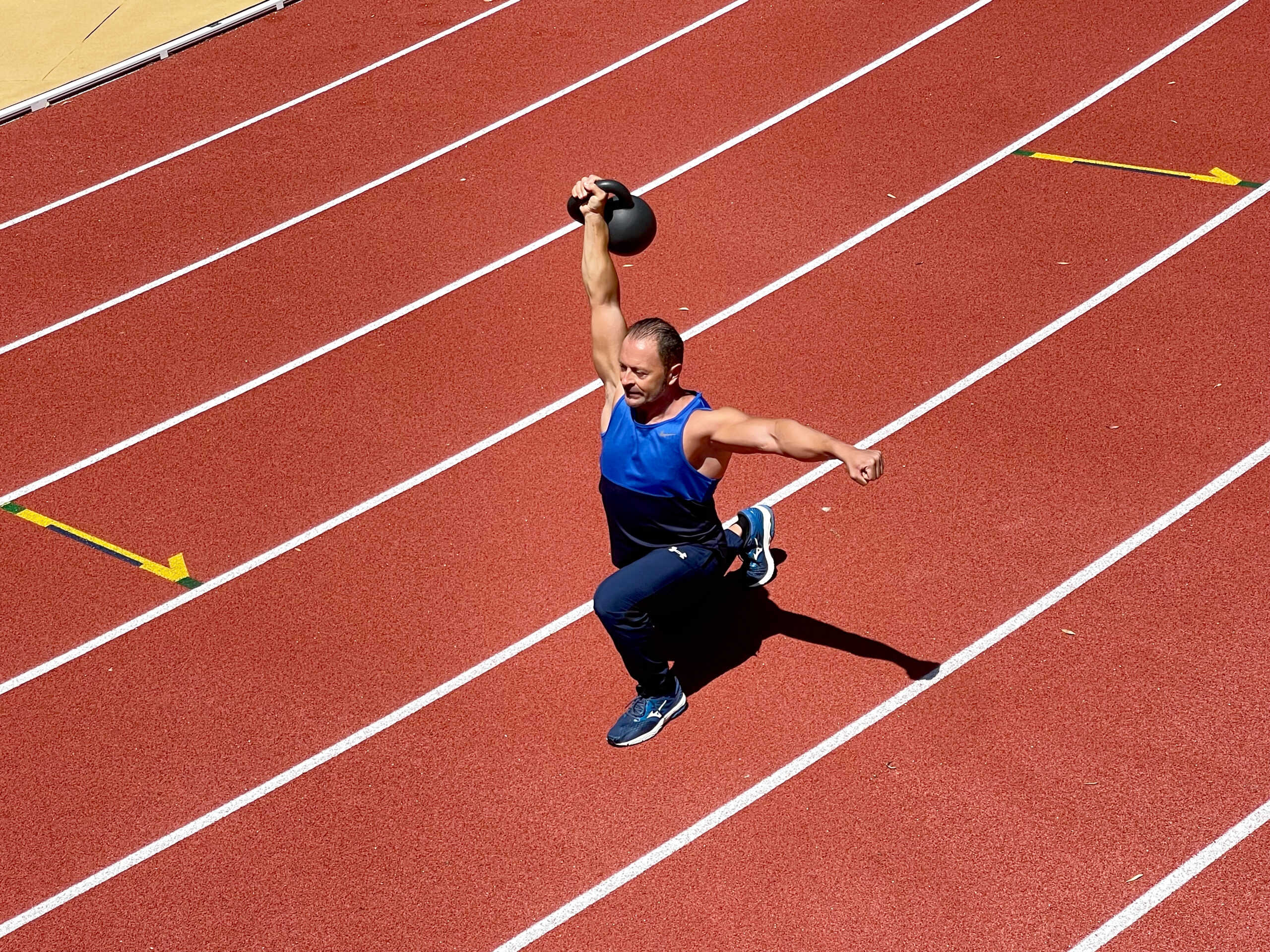

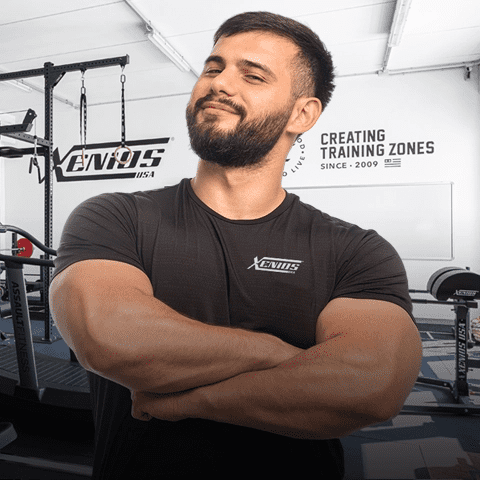
 Since 2009, we’ve been by your side, helping you create the perfect training spaces for Cross Training Boxes, Personal Trainer Studios, and professional Home Gyms.
Since 2009, we’ve been by your side, helping you create the perfect training spaces for Cross Training Boxes, Personal Trainer Studios, and professional Home Gyms.
